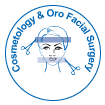Reference for the Soft Tissue Workshop
Received: 02-Nov-2017 / Accepted Date: 04-Nov-2017 / Published Date: 10-Nov-2017
Abstract
The soft tissue workshops carried out in medical schools was done using pig legs which is a very limited area to carry out the exercises; despite this, the objective of the workshop was achieved in terms of learning. Advances in medicine have caused changes in attitudes and in areas traditionally reserved for certain groups, thus causing a beneficial improvement between them, as long as medical-surgical acts are performed with the highest current standards.
Keywords: Soft tissue; Skin closure; Suture technique; Subcutaneous tissue; Adipose tissue
Introduction
This method of study is original and we have been doing it for several years in different schools and courses related to the surgical practice to obtain better tissue management, doing different exercises described in other workshops, thus expanding the field of practice with pig .
Objective
Here we propose a method to carry out the Skin closure workshop using a 20×20 cm square of pig skin, to have a wider area for the soft tissue exercises that were carried out on pig's legs.
Methods
Following are the equipment needed for the procedure:
• Adult pre-folded diaper (Figure 1)
• Pig skin (A 20×20 cm square)
• Suture equipment including scalpel handle, scalpel blade, dissection forceps (Adson with teeth), needle holder, scissors, fine leather hooks, ruler, compass, sutures, and gentian violet (for marking)
For this procedure clean Pig skin is used. The skin may include some subcutaneous tissue, some meat which should be completely clean. The Pig skin is previously shaved so that it is perfectly clean of hair and washed perfectly well. Salt is applied for , so it won’t get rancid or spoil (Figure 2). Pig skin has a subcutaneous cellular tissue and the plane between the dermis and the subcutaneous tissue is quite free, thus facilitating the control of the depth of the detachment plane. The desired detachment plane lies between the dermis and the subcutaneous cellular tissue (Figure 3).
Exercises for soft tissue management can be performed easily since the material is larger, malleable and resembles human skin (Figures 4 and 5).
The exercises performed in a workshop includes subcuticular running suture, horizontal and vertical mattress sutures, simple interrupted suture, simple running suture, “Z” plasty and half buried suture (Figure 6).
Advantages
When we do this method of study, students improved their surgical skills in the management of tissue, the types of injury, differentiate the use of points of suture and the material to be used, as well as the techniques of knotting, and getting to know its advantages and disadvantages.
Disadvantages
It takes time and patience for their individual understanding, critical thinking, decision-making and clinical judgment.
As result of the above, great care must be taken and no greater skill is required when taking off human skin [1-5].
Conclusion
This model will be of great help for future students in face wounds and scars handling courses, which can be students, interns, residents, general practitioners and relatives, since the responsibility of handling these problems is not reserved to anyone in particular, being the doctor the one responsible for knowing how to handle these problems adequately since achieving the best result depends on it (Figure 7) [6-9].
This reference is specially addressed to any doctor who receives a patient with wounds or scars on his/her face, so that he/she acquires sufficient knowledge to solve the problem immediately as well as in the best way. Although is not a simple task, if you persevere, it can be achieved.
References
- Moy RL, Lee A, Zalka A (1991) Commonly used suturing techniques in skin surgery. Am Fam Physician 44:1625-1634.
Citation: Olivares J, Solis J, Conde MA (2017) Reference for the Soft Tissue Workshop. Cosmetol & Oro Facial Surg 3:123.
Copyright: © 2017 Olivares J, et al. This is an open-access article distributed under the terms of the Creative Commons Attribution License, which permits unrestricted use, distribution, and reproduction in any medium, provided the original author and source are credited.
Select your language of interest to view the total content in your interested language
Share This Article
51ºÚÁϳԹÏÍø Journals
Article Usage
- Total views: 4398
- [From(publication date): 0-2017 - Jun 23, 2025]
- Breakdown by view type
- HTML page views: 3551
- PDF downloads: 847







